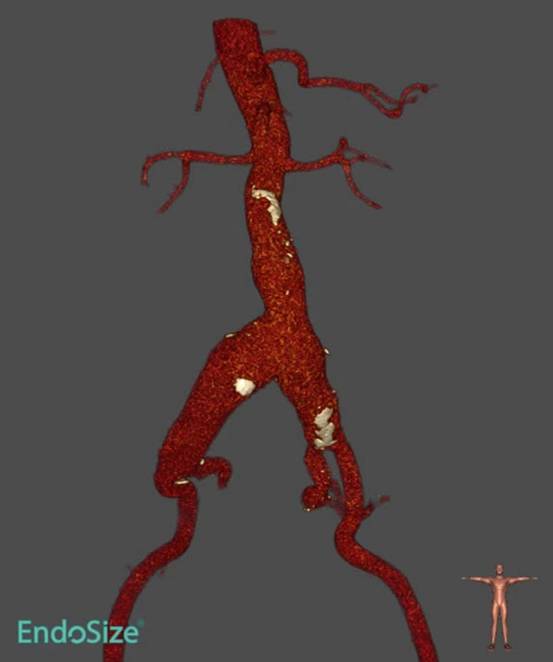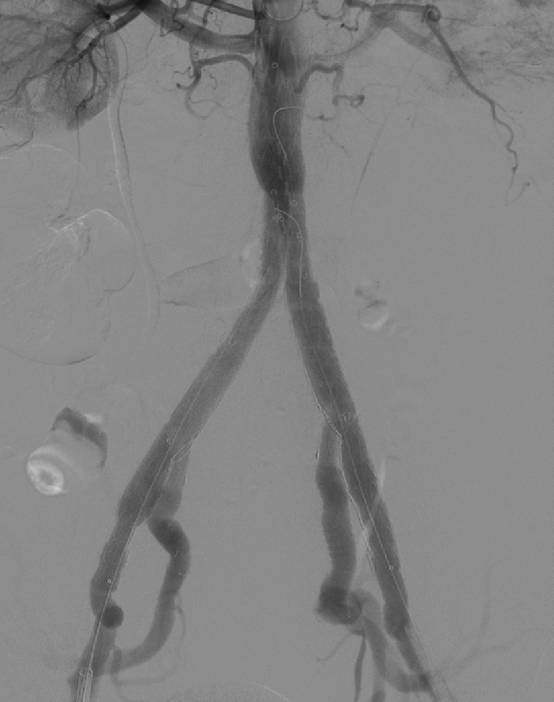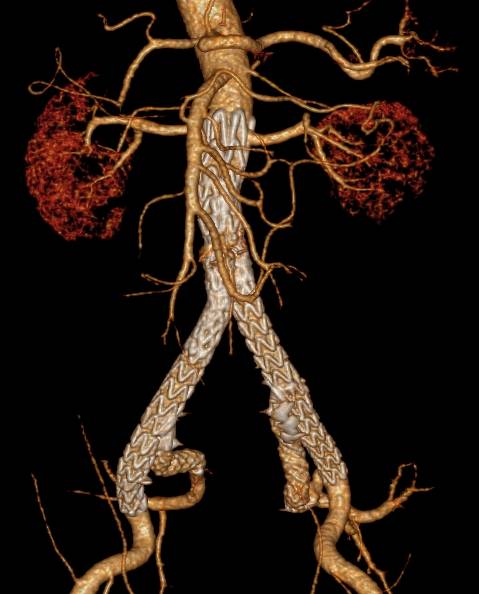A 53-year-old male patient, surnamed Li, was diagnosed with "abdominal aortic aneurysm complicated with bilateral iliac artery aneurysm" during physical examination. He sought for medical treatment in Department of Peripheral Vessel of the First Affiliated Hospital of Xi 'an Jiaotong University (XJTU). During the outpatient consultation, Professor Tian Hongyan and Attending Physician Qin Hao detected that the aneurysms in the lower segment of abdominal aortic artery and bilateral common iliac artery were significantly dilated, which were involved with bilateral internal iliac arteries.

Figure 1. Bilateral common iliac artery aneurysms in the lower segment of abdominal aorta are involved
with bilateral internal iliac arteries
After comprehensive analysis and design, Professor Tian Hongyan and Attending Physician Qin Hao chose to reconstruct the internal iliac artery by using iliac branch device (IBD).IBD is an ideal solution for endovascular reconstruction of internal iliac artery because it conforms to human anatomy, is safe to operate, yields low complication rate and high long-term patency rate. After explicit preoperative consultation, a feasible surgical plan was determined. The team performed endovascular exclusion of abdominal aortic and bilateral iliac aneurysms and bilateral internal iliac artery reconstruction for the patient.

Figure 2. Complete exclusion of abdominal aortic and common iliac artery aneurysms,
and bilateral internal iliac artery reconstruction
Under normal circumstances, unilateral IBD reconstruction was mainly adopted, and then embolization and covered stenting were carried out.Up to now, bilateral IBD reconstruction has been performed in less than 10 patients nationwide. No such attempt has been made in northwest China. The success of this case signifies that Department of Peripheral Vessel of our hospital has advanced into the national leading positions in the field of endovascular treatment of large vascular diseases, marking a new era of endovascular reconstruction of internal iliac artery in northwest China.
CTA at postoperative two weeks showed that abdominal aortic and iliac artery aneurysms were totally excluded, no internal leakage occurred, and the blood flow of bilateral internal iliac arteries was normal.

Figure 3. CTA showed that the aneurysms were totally excluded and bilateral internal iliac arteries were patent